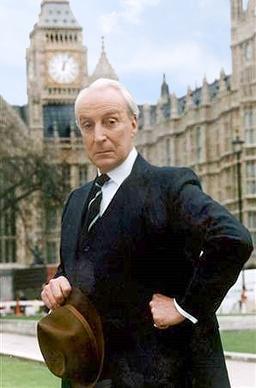 |
| William Augustus Bowles |
He's a handsome devil, isn't he? I encountered this gentleman in Mobile, Alabama during a very engaging tour of the historic Conde-Charlotte House. Dashing Billy's portrait hung on the wall of the second floor hallway. My brother, Danny, and I were spending a few days in this beautiful old city that began life as a French fort and trading post, and were taking in a few of the sights. Our guide, a lovely lady who treated us as welcomed guests, escorted us from room to room explaining the various periods illustrated by the furniture, paintings, silverware, and creature comforts, each room representing a particular period in the long history of the city. Though Mobile had begun life as a French enclave (and retains much of that flavor to this day), it would, in turn, become an English possession, a Spanish conquest, part of the fledgling nation of the United States; secede with the state of Alabama to join the Confederacy, and finally, return to the fold at the close of the Civil War.
As it happened, we were just finishing our tour and preparing to go back downstairs when the painting caught my eye. It had not been remarked upon prior. "Who's this?" I asked, genuinely intrigued by the striking subject in the Native American turban. Our guide grew instantly more animated, raising an eyebrow and saying, "Mostly it's the ladies who notice Mr. Bowles." I quickly assured her that it was my interest in Native American history that drew him to my attention. Brother Danny snorted. "Well," she went on to explain with a smile, "Mr. Bowles was not an Indian, but he was quite a rogue, and at one time, declared himself chief of the Lower Creeks."
Declared himself...? I was hooked...and I think you will be, too.
What follows is the very large story of William Bowles condensed for the sake of narrative brevity. There is much left unreported and I beg your understanding. My thanks to Rhen Druhan at the Conde-Charlotte Museum for her invaluable aid. Much of the information here was drawn from a wonderful piece on his life in issue 103 of Alabama Heritage Magazine, as well as other sources.
#
The word scoundrel has many permutations in the English language: When speaking of corrupt politicians we generally intend it as a pejorative. But there's another category of scoundrel that when we apply the word to them, it's always accompanied by a slight, involuntary smile. Yes, we know that they're not very good people, maybe even pretty awful ones, yet...we find them charming, entertaining, larger than life, living more fully than we dare, taking risks that most of us never would. These are the same folks we also use the word roguish to describe, or perhaps, adventurer. We often write about such people and it's easy to think that they're mostly fictional characters. Mostly they are. Then there's William Augustus Bowles.
William began life in 1763 as the sixth child of an English family making its home in the colony of Maryland. He was remarkable from the start. Described as an aggressive, vigorous boy with an olive complexion, he excelled at many pursuits. He leaned to speak French, play the flute and violin, painted, was well-versed in mathematics, history, and literature; was, in fact, an avid reader. Besides these artistic and academic qualities, he was a good horseman and all-round outdoorsman. In short, he was gifted with good looks, health, intelligence, and sensitivity. He was also very headstrong as events would prove.
His family being fervent Tories during the Revolutionary War convinced young William to join the cause of Britain at sixteen years of age. But after being garrisoned in Philadelphia he found himself cooling his heels for the next several years growing ever more impatient to see action. Hearing that a military ship was looking for volunteers for duty in Jamaica and Florida, William hastened to join. He was commissioned as an ensign and set sail. What happened once the crew went ashore in Florida remains unclear. What is clear, however, is that young William deserted the ranks (he described it as resigning his commission) and made good his escape in the vicinity of Pensacola. Think of it, dear reader, our young hero afoot in the palmetto jungle and swamplands of northern Florida; hundreds of miles from home. He can neither return to Maryland nor go back to Pensacola. He would surely swing either way.
But as often seems the case in the life of the daring, the unexpected happens--a party of Creek warriors come upon him and, like many that would follow, are impressed. So impressed by his personality and verve that rather than harm him, they take him along to their village.
 |
| Chief Tomochichi and Nephew |
Within a short while he is adopted into the tribe, a tribe that holds sway over much of Alabama, Georgia, and northern Florida, becomes fluent in the Muscogee language of the Creeks, and takes a wife. Always one to live large, William also manages to wed a second lass, a Cherokee, thus uniting two peoples often at odds with one another. Presumably, being William, he also learns the Iroquoian tongue spoken by his second bride. Retaining considerable energies, even with two young wives in his household, he begins his first grand adventure. Learning that the Spanish are attacking British forts along the Gulf Coast, he convinces a number of Creek warriors to join him in the defense of Pensacola. It is certainly a measure of his remarkable character that he is able to lead braves into battle after having lived amongst them for so short a while. In any event, the garrison is lost when a Spanish shell blows up the powder magazine and the fort along with it. Ever a survivor, William flees into the forest with his adopted tribesmen and makes good his escape--a talent of his that would be utilized many more times during his life.
 |
| Spanish Troops Capture Pensacola--U.S. Military Museum |
The Spanish, having taken advantage of Britain's long war with its colonies, now controls Florida and the Gulf coast, and with it the trade monopoly with the Creeks and Seminoles. The Director-General, undaunted, meets the challenge with vigor--he declares war on Spain! His Creek allies are somewhat divided on this issue. They have grown comfortable with Panton, Leslie, and Company, the firm that the Spanish have commissioned as their trade emissaries. Besides, the British are losing the American war and their defeat is imminent. Details! Young William decides that Panton and friends must go.
Again using his powers of persuasion, he is able to convince the more brash among the young men to support him in a strategy of intimidation and violence against his competitors. Within a short while he has succeeded in making himself the target of His Most Catholic Majesty's ire. In order to bolster his position, William ups the ante once more, telling the Creeks that if they would only recognize him as Chief of All the Creeks, he would see to it that the British Crown recognize them as a legitimate nation and establish an exclusive trade agreement. The people, uneasy with Bounding Billy's vaulting ambition, grow ever more divided and fractious. Yet, he has his supporters; the idea of a separate Indian Nation appeals to many and William's daring is infectious. Traveling to England he makes his bold claims. But for all his trouble and bluster, the government remains unimpressed. There will be no treaty and no recognition of the, so-called, State of Muscogee. He may, however, act as their sole trade representative to the natives. Something he is already doing. This is not what William relates to the people upon his return.
Declaring the negotiations a triumph on all fronts, the leader of the mythical State of Muscogee sets in motion the full machinery of war. The Director-General proceeds to outfit two schooners as his navy and organize an army of four hundred Creeks warriors, frontiersmen, and former slaves as his soldiers and sailors. In short order he begins to stock the coffers with the plundered riches and goods of Spain. The store is now open and the British once again competitors in the contested region. The year is 1800.
 |
| Charles IV of Spain by Goya |
Branding the young upstart a pirate, Spain places a huge bounty on his head and it is not long before he is captured and transported to Spain to face justice. As seems ever the case, the Spanish find William as irresistible as all before them and Charles IV himself(!) attempts to win him over to the Spanish cause. Our Billy's not having it. Whatever he may be--scoundrel, liar, pirate, con-man, adventurer--he is English, by God! Disappointed, no doubt, the emperor has him shut away in prison. By now you must know what happens next--he makes good another escape, commandeers a ship, probably in much the same manner as hailing a taxi, and returns to Florida.
But several years have gone by and William finds much changed in his absence: His rivals once more hold sway and British influence has all but vanished. Worse yet, important leaders among the Creek peoples have closed their hearts to him, fearing both his ambitions and judgment. Hearing of an important meeting between both Upper and Lower Creeks William decides to go all in. Gathering his dwindling supporters around him, he crashes the party and does what Brash Billy does best, demands that he be recognized as "Chief of all Indians present"! His enemies, knowing William as they did, are prepared for such a move and promptly take him prisoner, handing him over to the Spanish once again. The Spanish having also taken the measure of our hero, on this occasion transport him to the infamous Moro Castle in Cuba to languish. This time, however, there is no escape. Whether he is mistreated, poisoned, or simply dies of neglect we shall never know, but by 1805 Dashing William is seen no more. He is 42 at the time of his death, having spent 26 years living on the edge; his dream of an independent country for his adopted Creeks dying with him. I hope that his two wives, at least, mourned his absence, but history remains silent on this question. Having dared much, he lost it all in the end, and though there is much to be complained of in William Augustus Bowles' character, certainly two things can be said in his defense: He remained loyal to Britain until the end, and he certainly did not lack courage. Loyalty and Valor do not a bad epitaph make.
 |
| The Capture Of Havana (Moro Castle) |








































